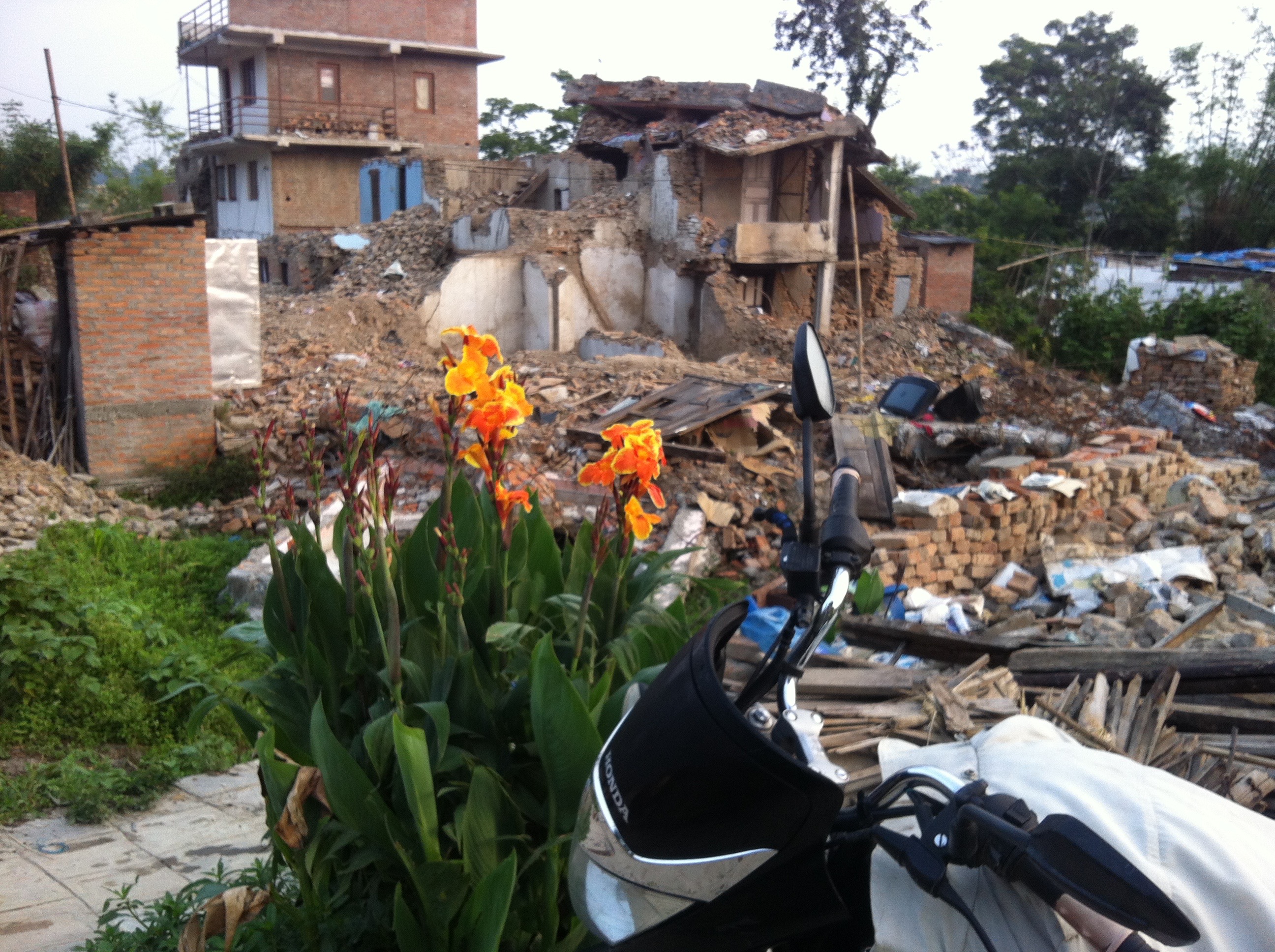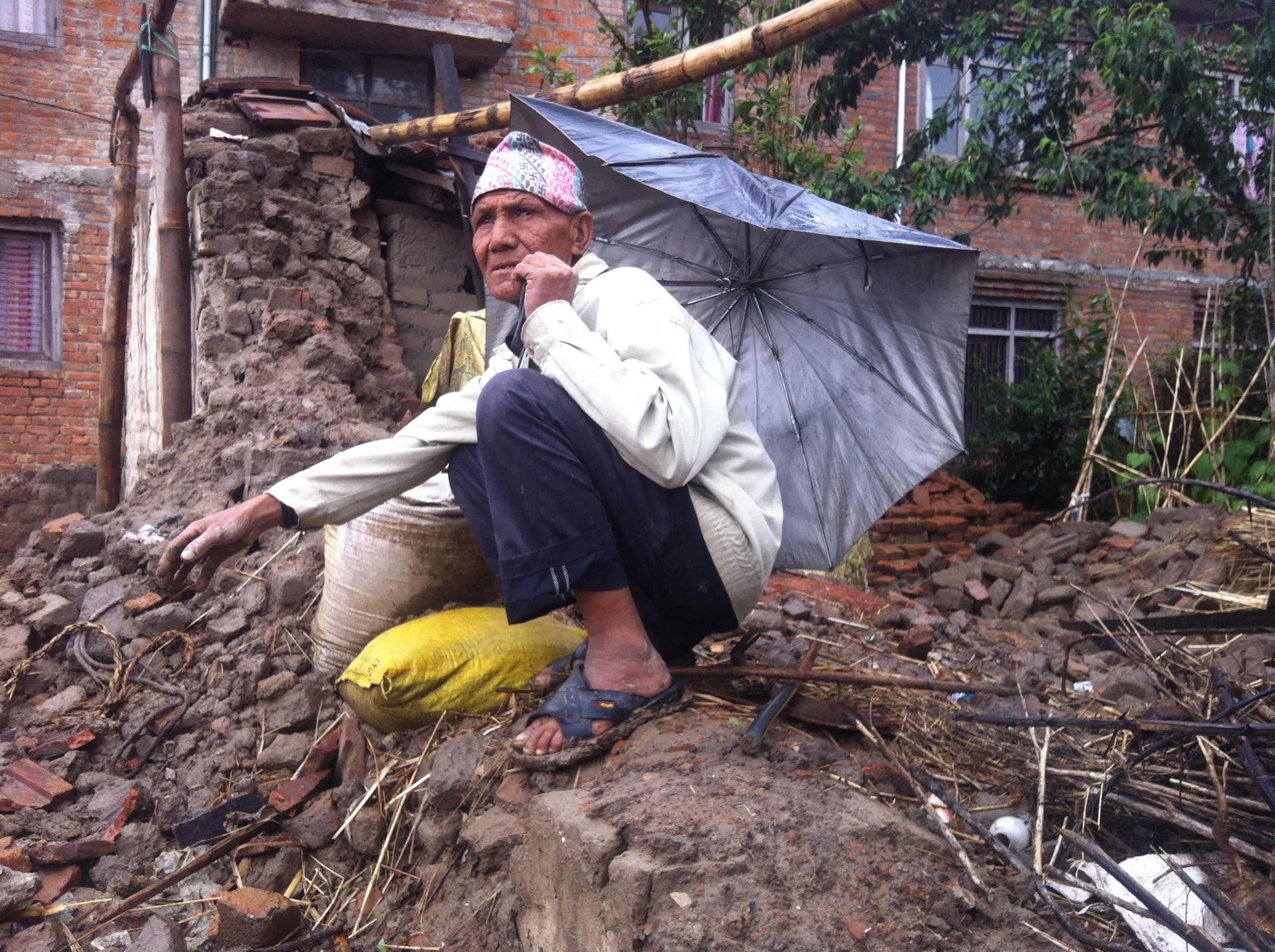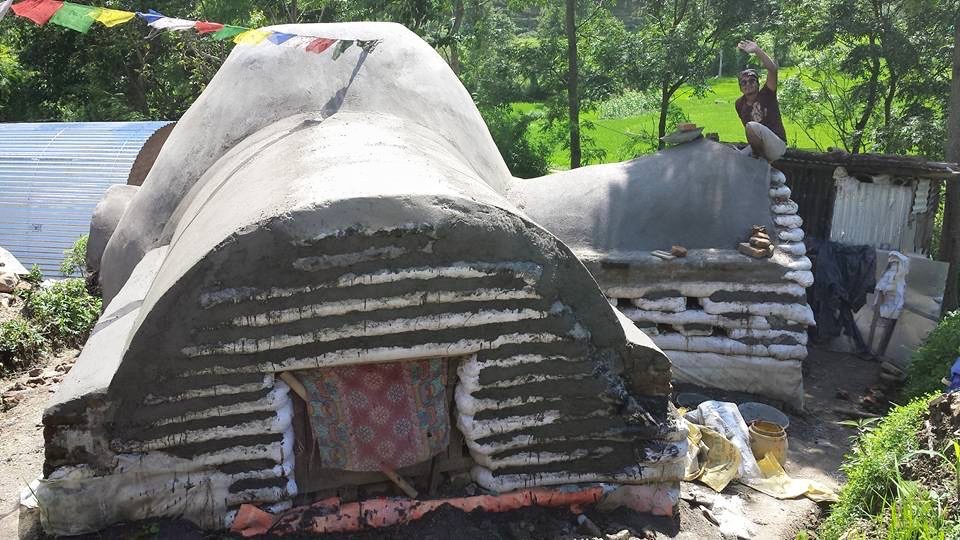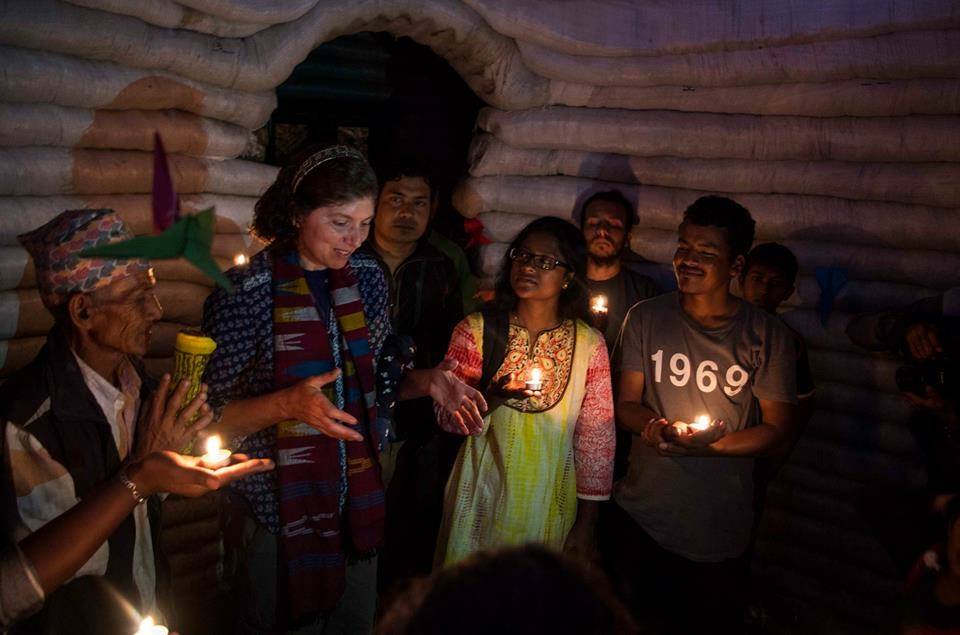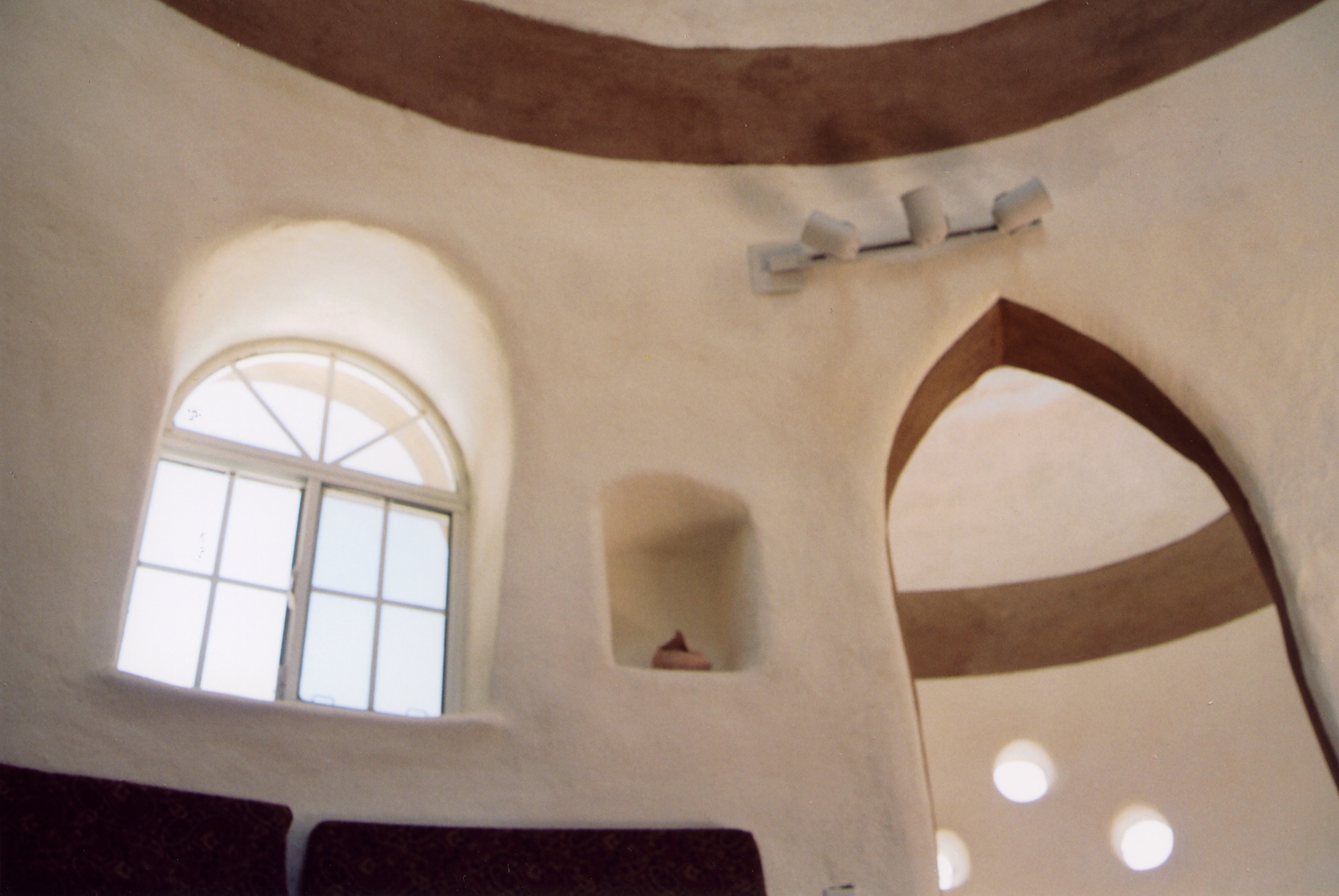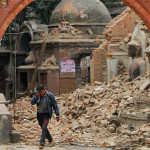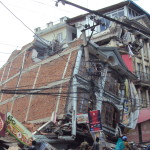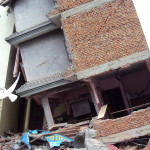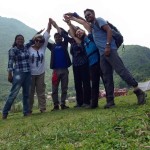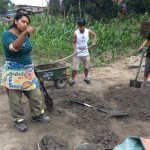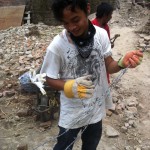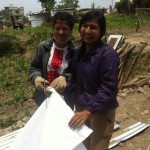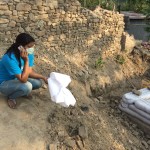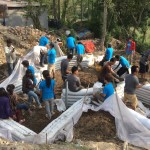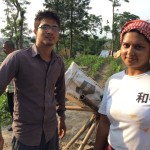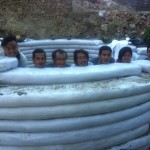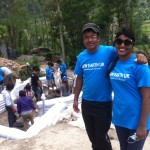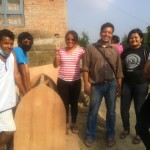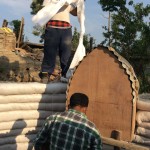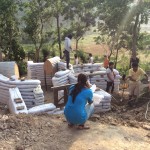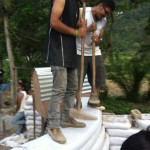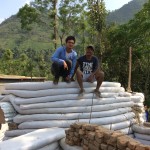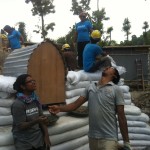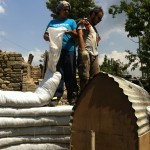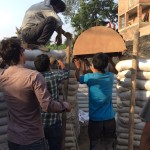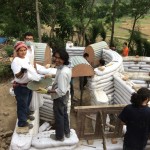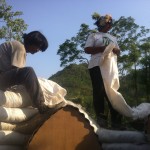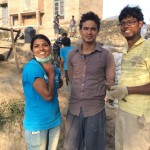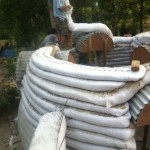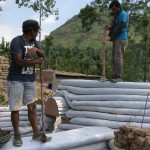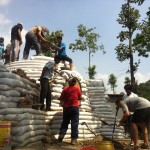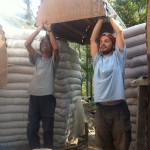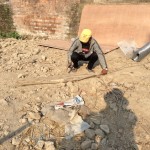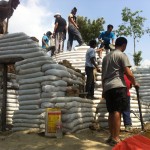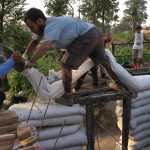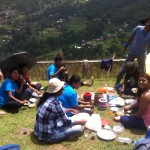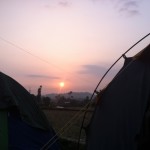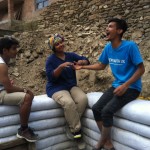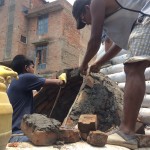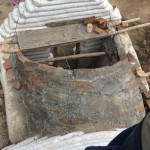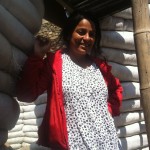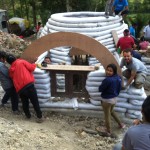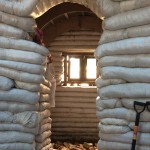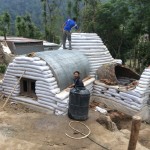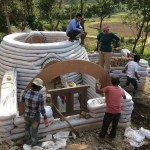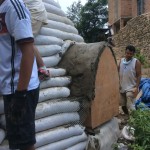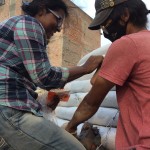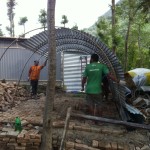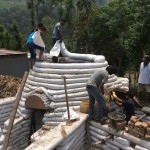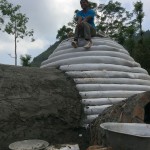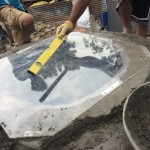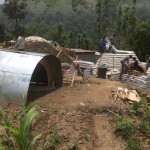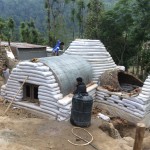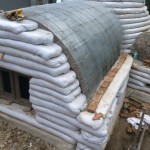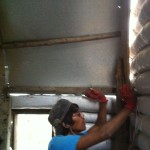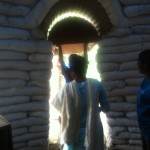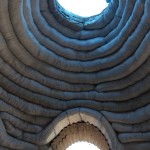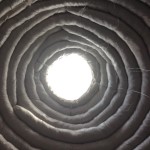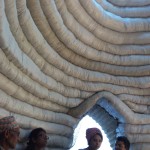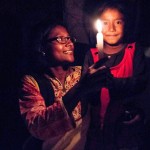Emergency Sandbag Shelter and Eco-Villages: The need for safe shelter. August 7, 2015

After the Major earthquake of April 2015, the Himalayas moved a metre south. Within the same month millions of homeless Nepali villagers are living in tents, under leaking tarps, and corrugated sheeting. They must survive the heavy monsoon rains in transitional shelter and after that, the cold Himalayan winter. Over 9,000 people died and an estimated 70% of village homes and historic buildings collapsed in the devastating earthquakes earlier this year. New buildings of concrete and steel cracked open with the earthquake’s uplift forces and are unusable. The last such major earthquake was 80 years ago. Now it will take years to re-build.
Earth Architecture Proposal by New Earth: A proven system
Immediately after the earthquake, New Earth UK sent a team of six to Nepal, including three earth architects led by Iliona Outram Khalili, Aktanin Khair Tanin, Ion Maleas, Mahfuz Russel, Fatiha Polin, Mahin Ahmed, on the invitation of Nepali architect colleagues, Mahesh Maharjan and Kris Gurung, to show a method of re-building safely using affordable earth and natural materials which are used in the local tradition. The Earth Architecture technique used was based on “Emergency Sandbag Shelter, and Eco-Villages”, a technology which architect Nader Khalili tested at Cal-Earth Institute, and was approved in California’s highest seismic zone 4 during the 1990’s; this won the Aga Khan Award for Architecture in 2004 based on United Nations refugee prototypes. New Earth and the local architects instructed volunteers to build a transitional home for Surja Maya and Mangal Maharjan from 21st May to 12th June 2015 in the village of Lanagol – 15, Kirtipur.


The home was built by 100% volunteers, including the villagers themselves. In the midst of many aftershocks, the dome and vaults were unaffected. In the process, the earth bricks and materials from the fallen village house were recycled into the new home. Diverse people came together; Nepalis from all walks of life worked together with New-Earth’s team from the UK, Greece, and Bangladesh, who stayed in tents in the village. When an earthquake brings down the house, what remains are the people who survived, and “tradition” lives in them, not the house. Traditional values get overlooked when the modern, global building industry tries to rebuild by reinforcing and replicating the forms of the past. Yet this building process includes valuable traditions like village togetherness, helping each other, using available and affordable natural materials, working closely with the earth as they do in agriculture, building in the rhythm of climate and seasons, eating together, feeding each other, including the community’s prayers and ceremonies, the traditional way of using the house, and respecting the family/social relationships. By living in the village and working together as a family of souls, we learned that what is timeless in the traditional way of life can live on and be renewed by translating into safer, more stable forms based on timeless principles. As a process, the new house depended on brotherly/sisterly love and peaceful togetherness to be constructed.
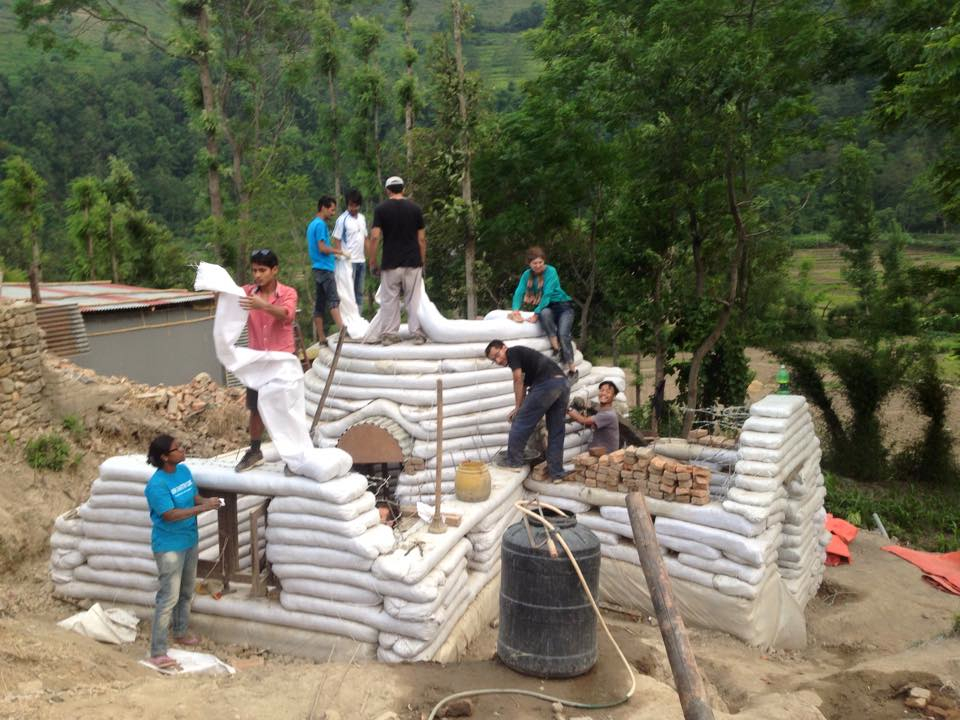
Fatiha Polin, New Earth volunteer architect writes: “Surjamaya-Mongal Home: An expedition beyond expectation Lanagol, Kirtipur, Nepal: One home for a homeless elderly couple in the village of Lanagol, thousands of dream accumulated by hundreds of volunteers from different part of the world. Being a part of this project is being a part of our lost adolescence. We built, we played, we dream. We forget the pain of hard work, scorching sun, appetite for delicious food, we forget to be selfish. In return, we flooded by the love of those humble villagers, amazed by their strength of facing the destruction and accepting life as the way it is.”
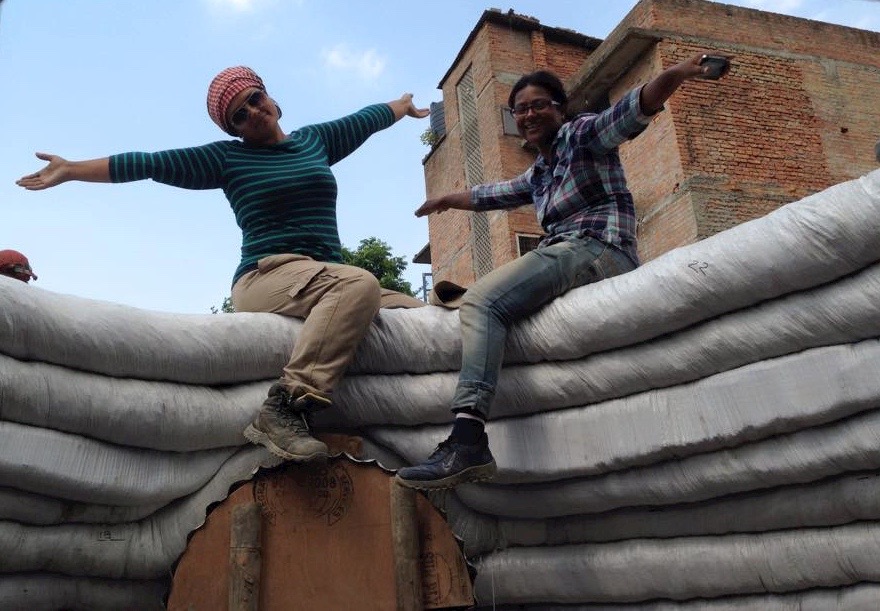
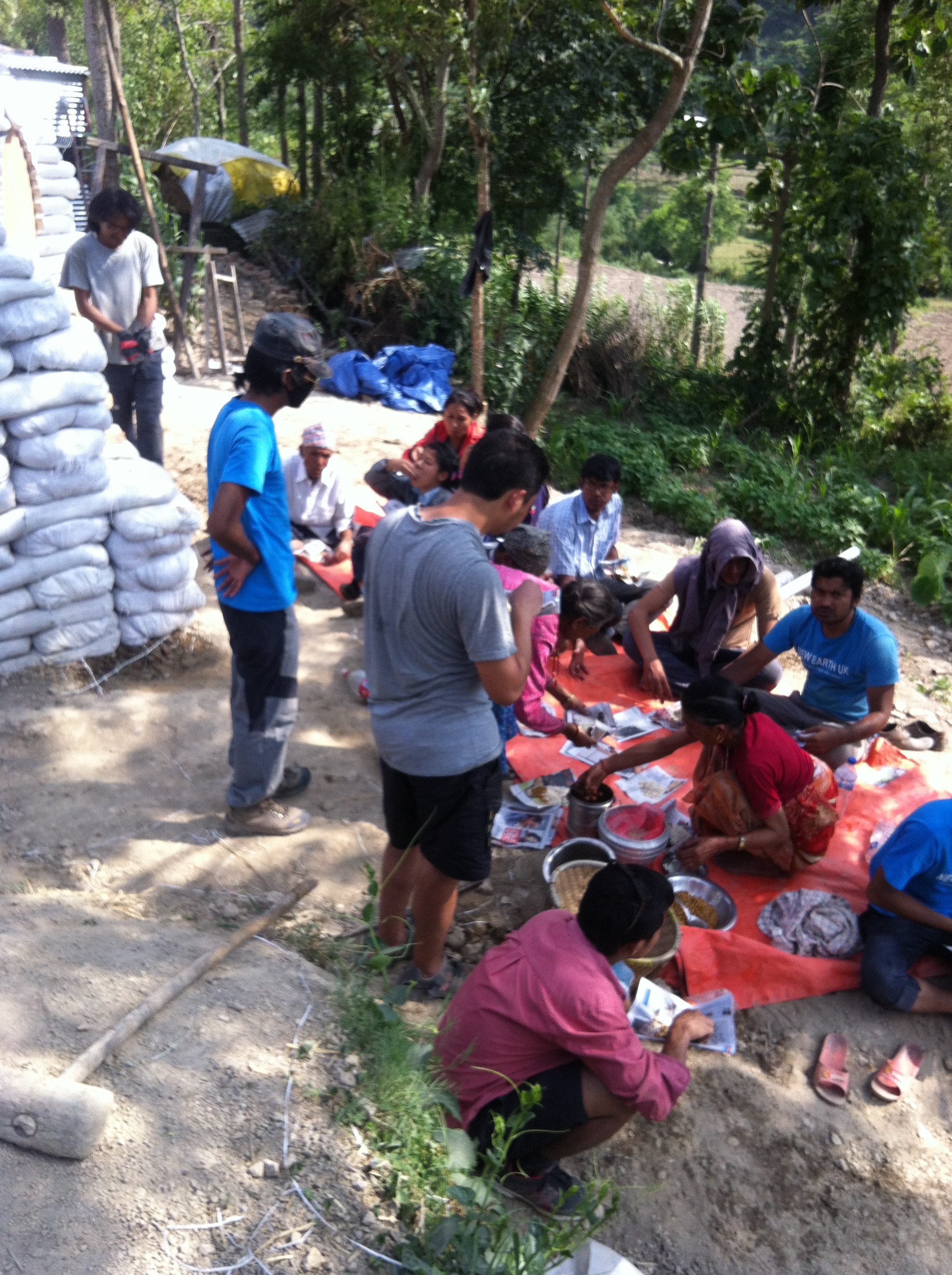
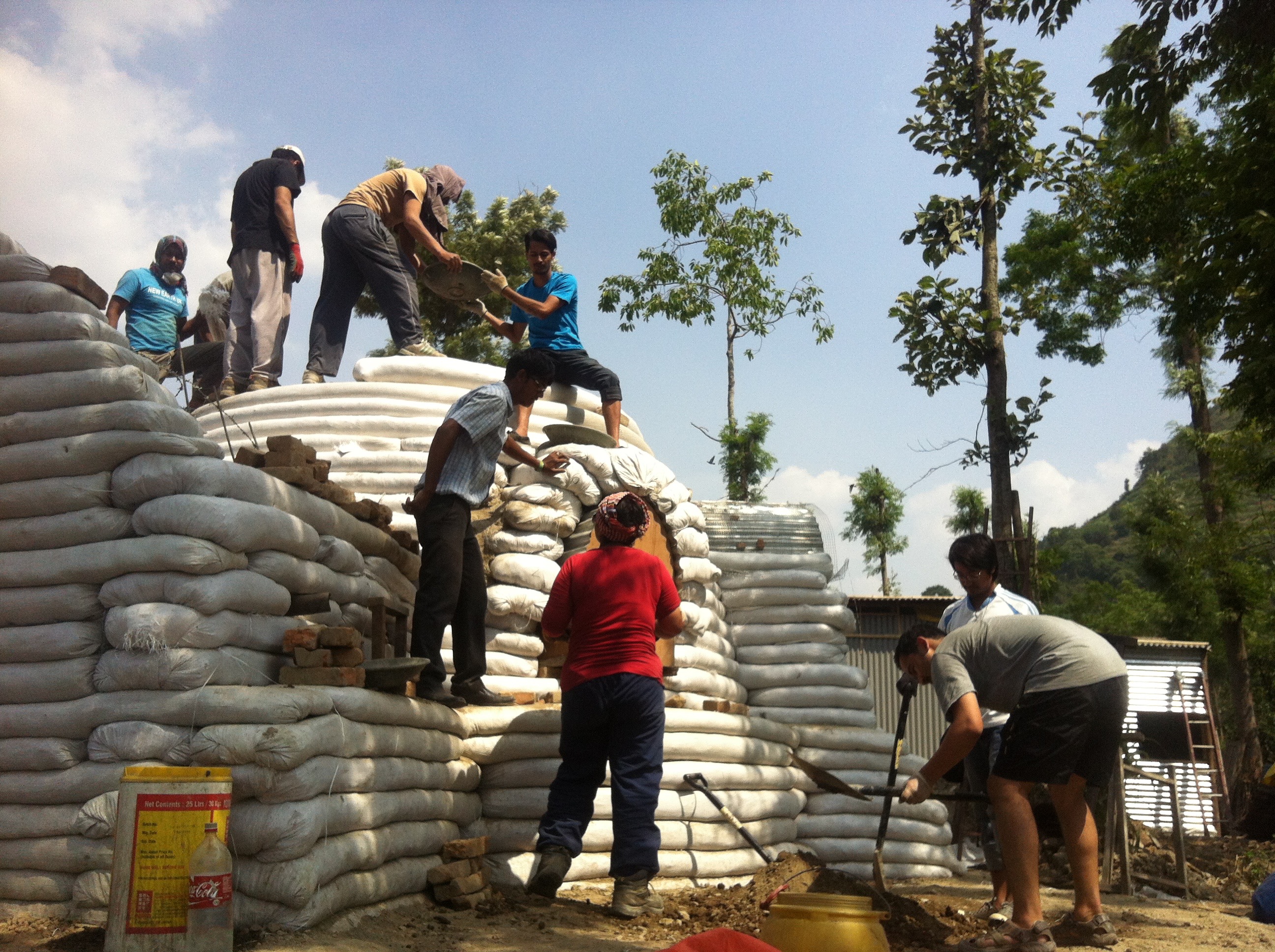 We would like to thank the generosity of all those individual sponsors who contributed to this work, and the institutional support of HBRI (Housing Building and Research Institute) and IAB (Institute of Architects Bangladesh). In early 2014 and 2015, New Earth UK on the invitation of HBRI, brought the existing California-tested technology to the HBRI testing facility in Dhaka, to further its research for application in the SAARC region with their support. Based on these tests, we gained the confidence to go to Nepal during prolonged seismic activity and build a safe and lasting home.
We would like to thank the generosity of all those individual sponsors who contributed to this work, and the institutional support of HBRI (Housing Building and Research Institute) and IAB (Institute of Architects Bangladesh). In early 2014 and 2015, New Earth UK on the invitation of HBRI, brought the existing California-tested technology to the HBRI testing facility in Dhaka, to further its research for application in the SAARC region with their support. Based on these tests, we gained the confidence to go to Nepal during prolonged seismic activity and build a safe and lasting home.
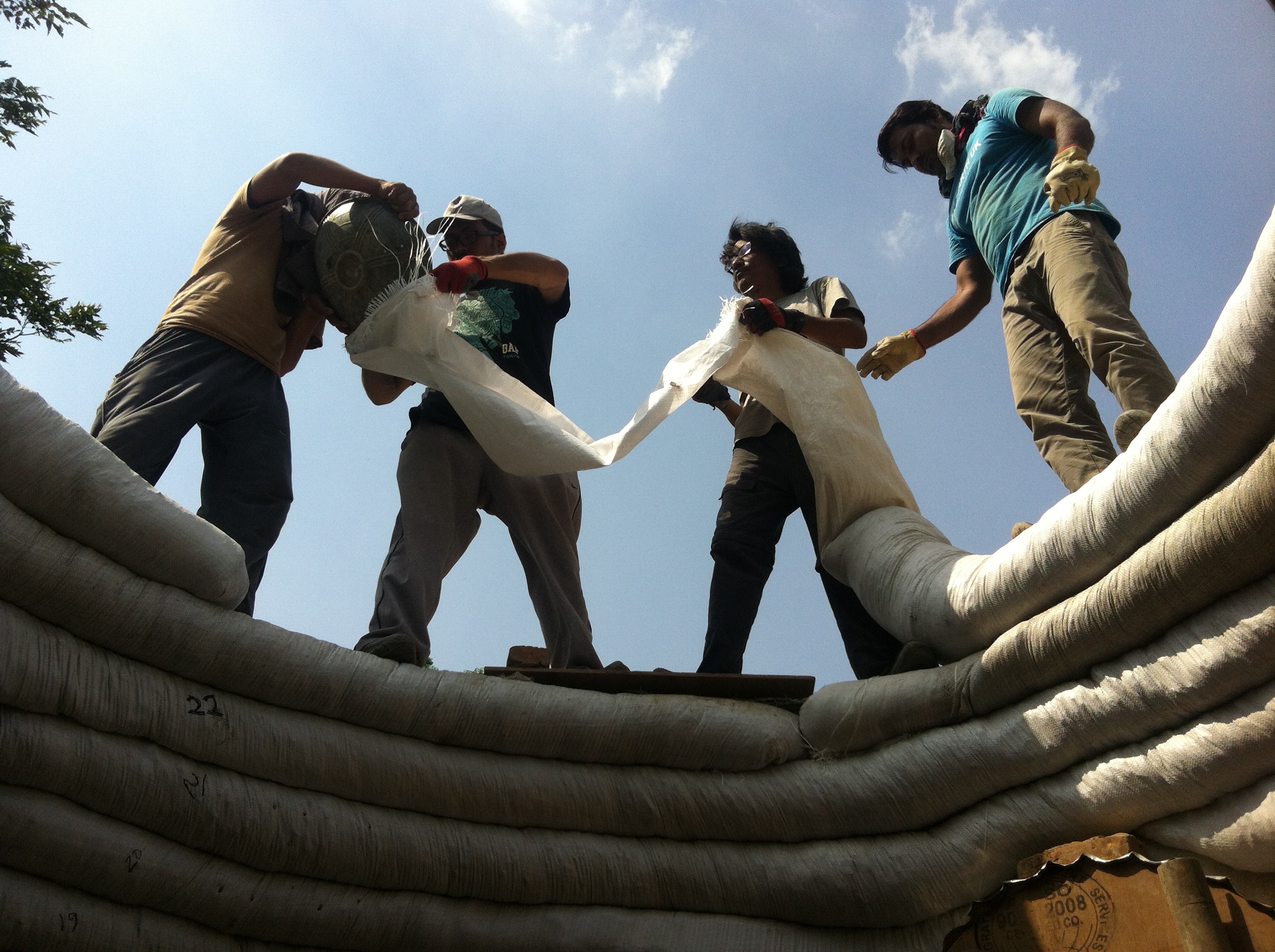
New Earth’s original intention was to build an emergency shelter, but the high quality result was more than a “transitional” shelter, and can become a permanent home by adding good windows and doors, plastering, waterproofing and installing interior fittings and finishes. The total spent on the shelter phase was 1.3 Lakh NPR , and upgrading to permanent needs an additional 1.7 Lakh NPR. A new septic tank must also be added. With the knowledge gained by this project, it could be possible to reduce the transitional shelter cost by a further 1/2 Lakh NPR with appropriate training. During construction, we taught over 40 students and volunteers how to build a disaster resistant, safe and long-lasting shelter with available materials, using 95% unprocessed earth. Based on these costs, Nepali villagers with a little financial support, could most easily re-build their villages safely.


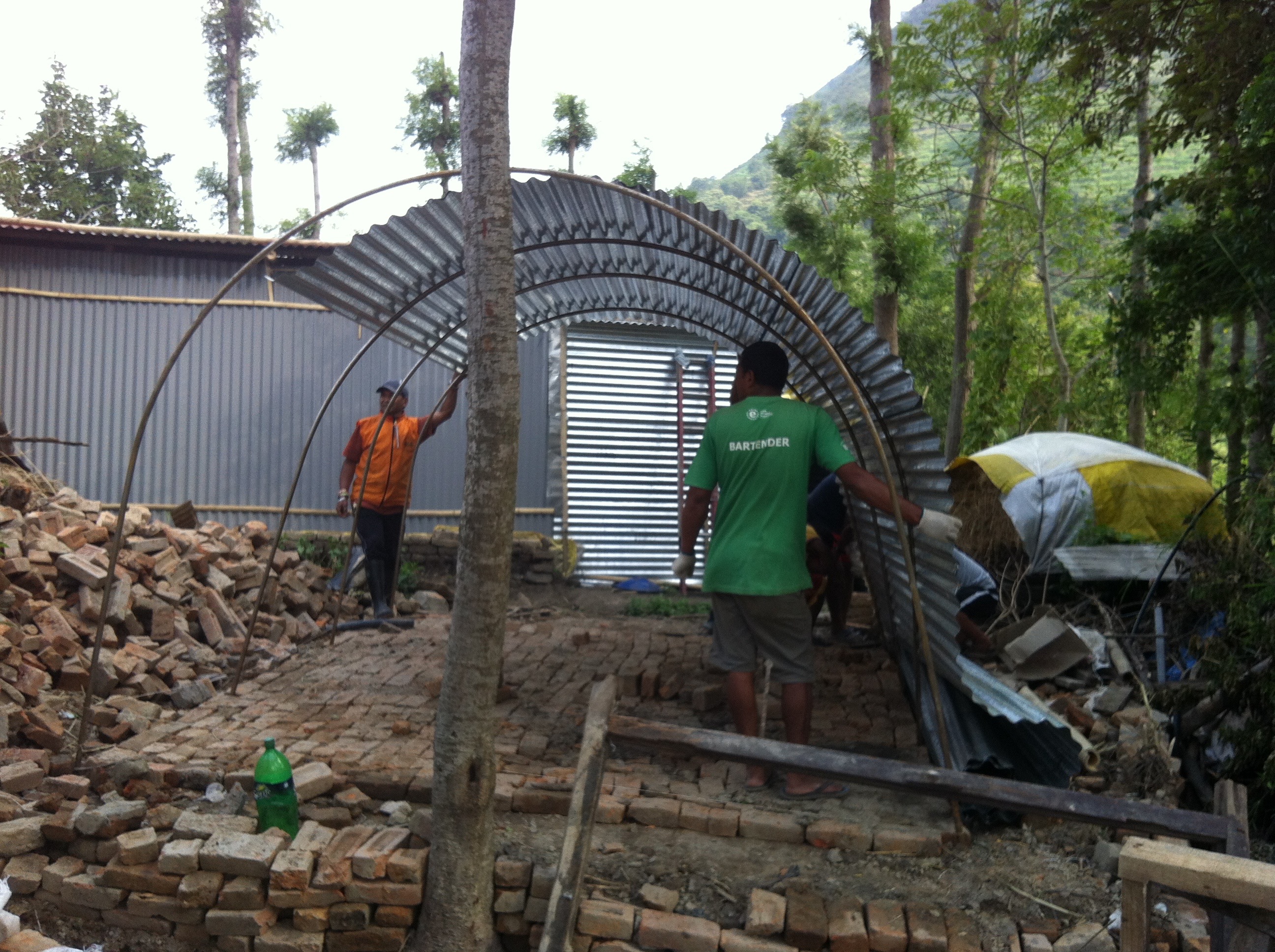
Turning Transitional CGI Vaulted Shelters into Permanent Homes.
The existing CGI vaulted shelters in Nepal could be re-used to form multiple vaulted roofed homes based on the tested California prototypes and construction specifications. Such houses could be designed to incorporate sustainability principles such as heating with the sun and cooling with the wind, by scientific orientation, calculation and design. Several prototypes could also provide models of sustainability to inspire the whole country.
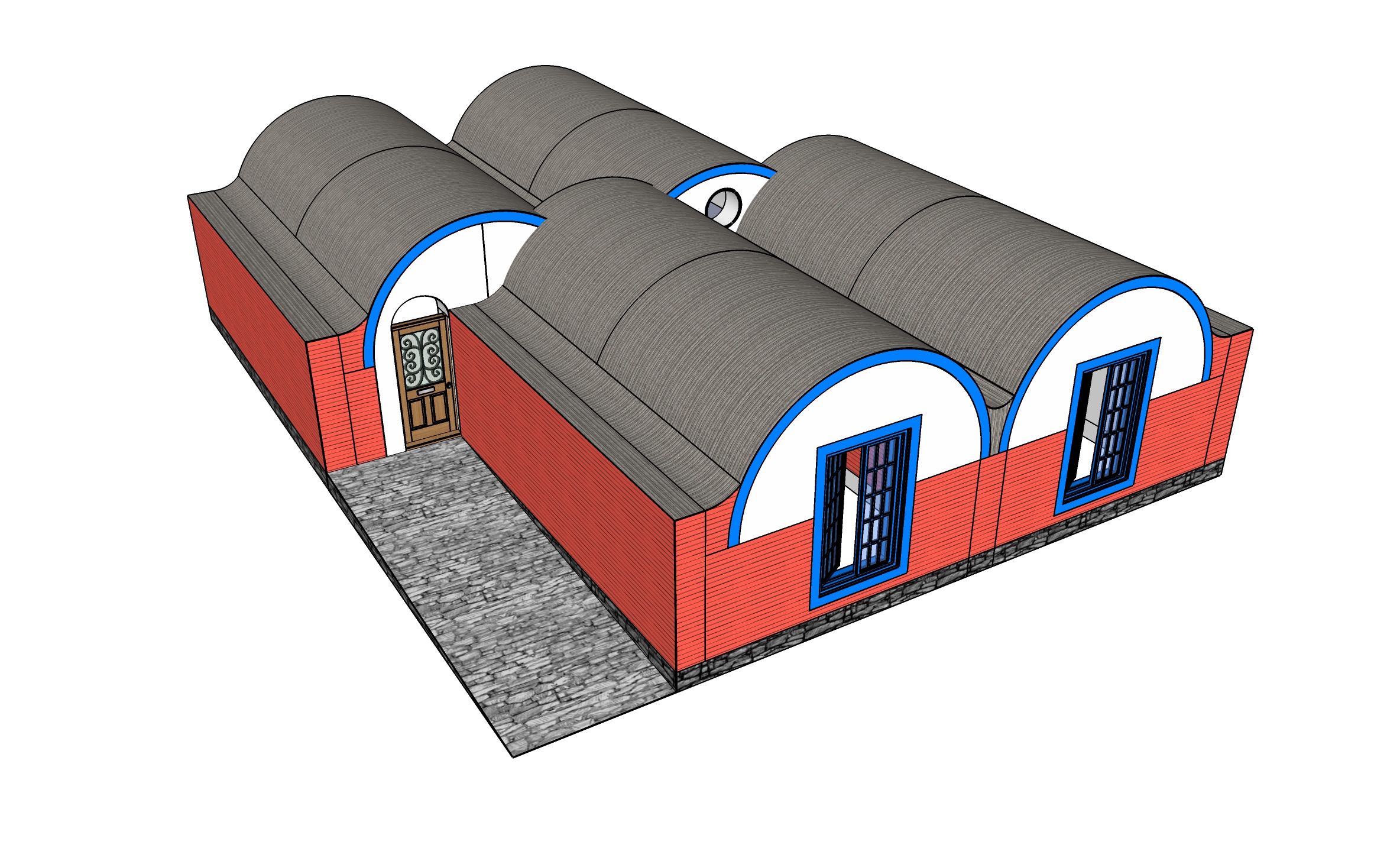
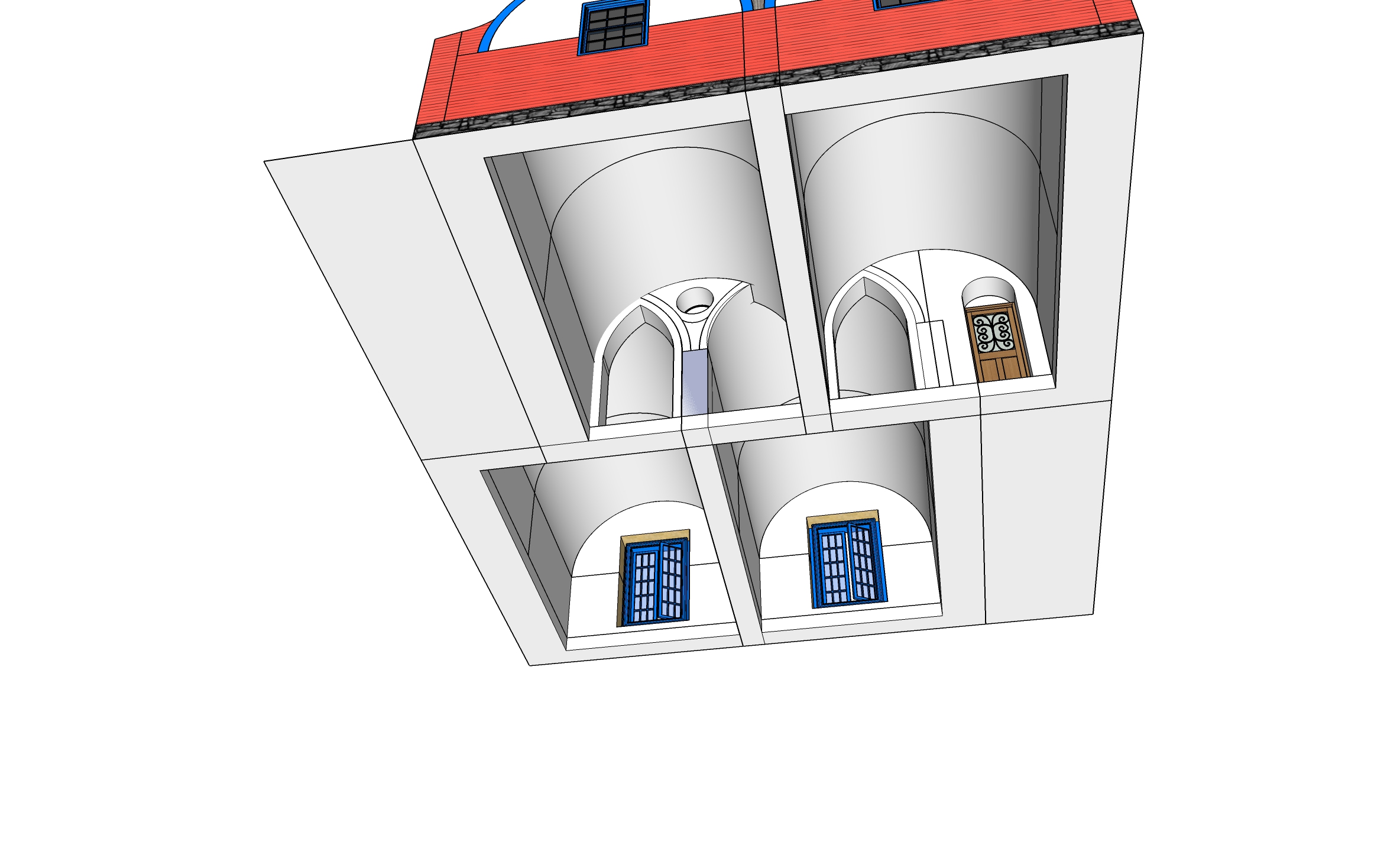
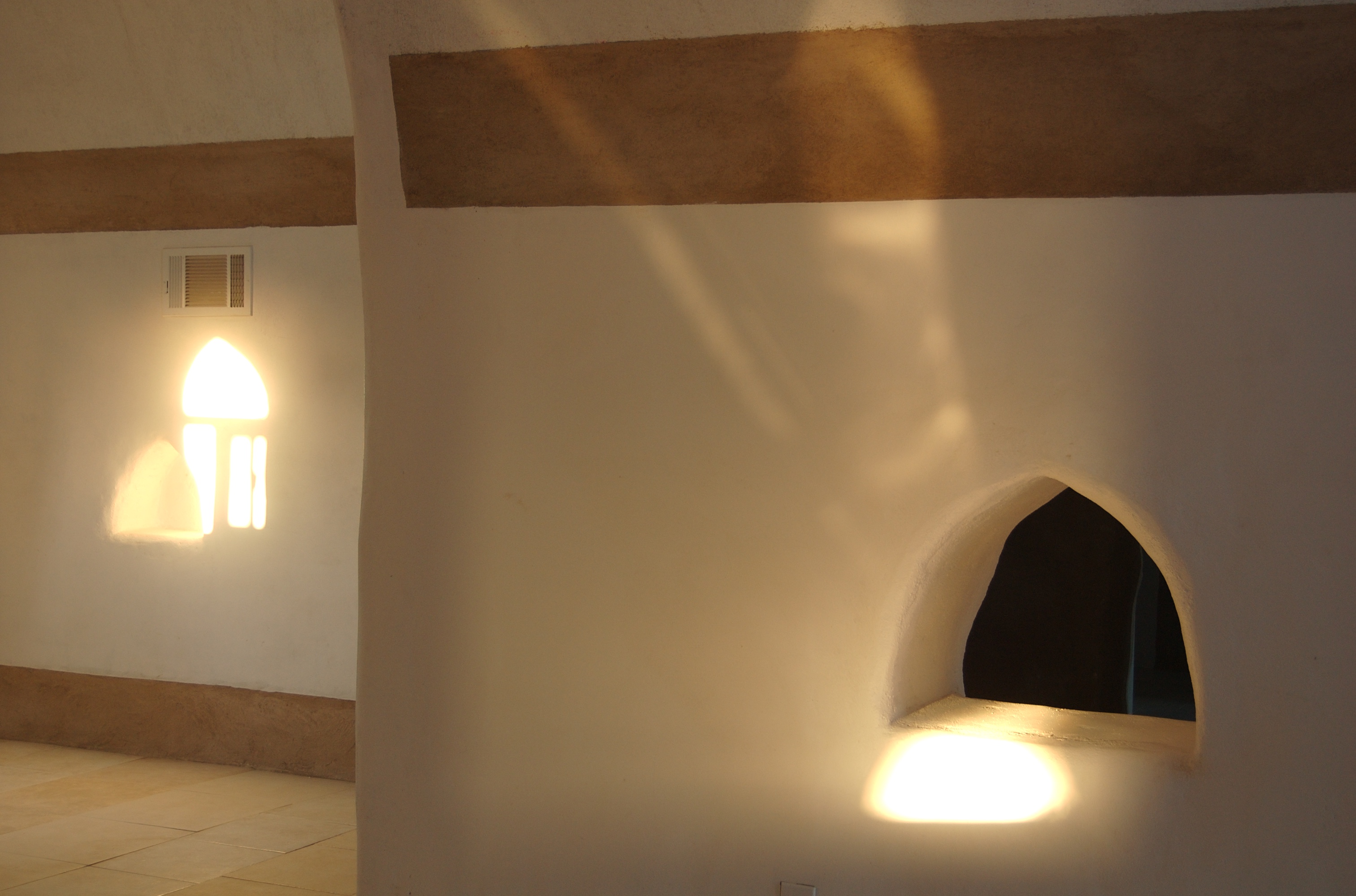

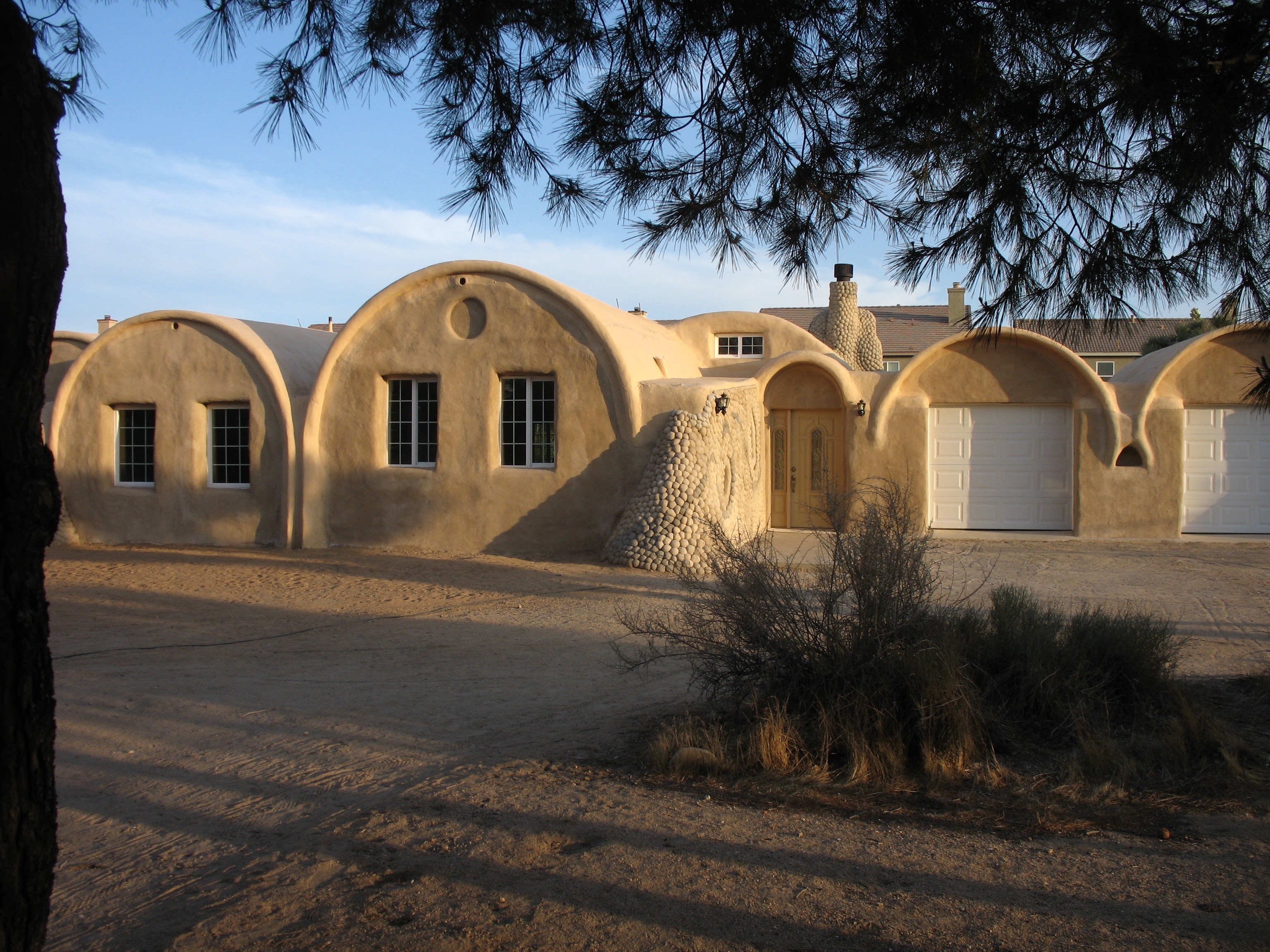
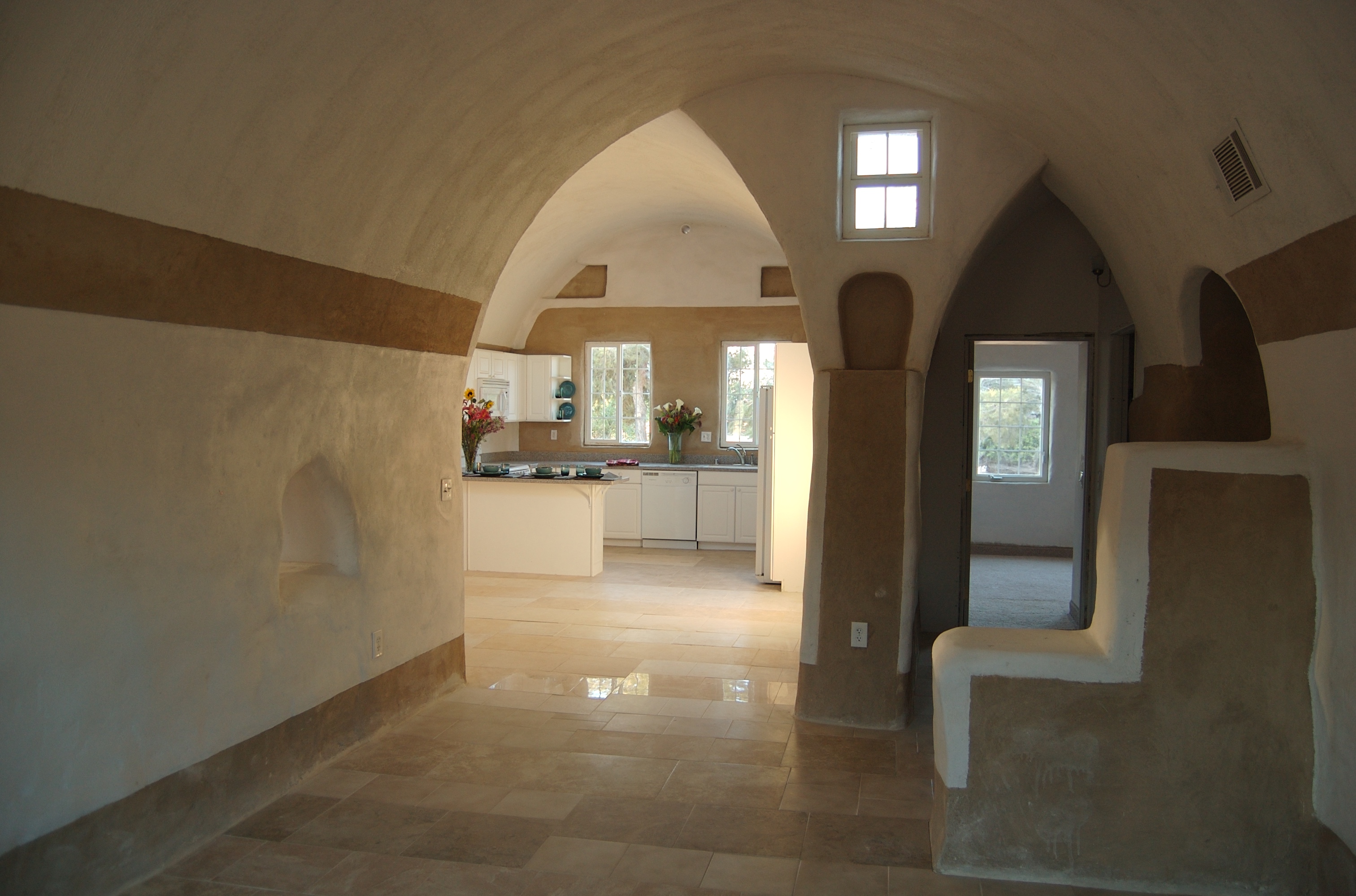
Conclusion
The experience of seeing the devastating effects of the earthquake on the traditional houses, and the success of building one sample shelter during the aftershocks, reinforced for us the strong message that tradition is more than mere looks. Now in Nepal, are people going to be nostalgic to go back to the way things used to look, or will they move beyond the looks and carry with them what is valuable and lasting into safe homes in the future? The Sandbag Shelter system offers a safe scaffold, like the basic chassis of a car, onto which people can customise their own colours, decorative symbols, spatial arrangements, and meanings. We believe the Nepali people will rise to this challenge and include disaster resistant earth housing into their 21st century vision.

Many thanks to all the volunteers and their organisations: Aware Nepal, Rotaract Club of Durbar Patton Square, Change the Lives.
Photogallery of Building the House In Lanagol, Nepal.

